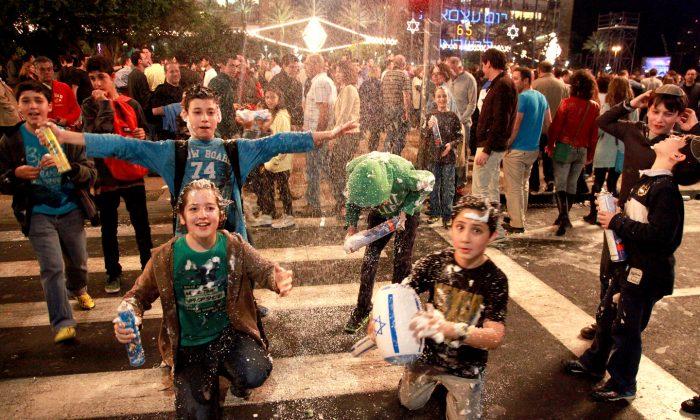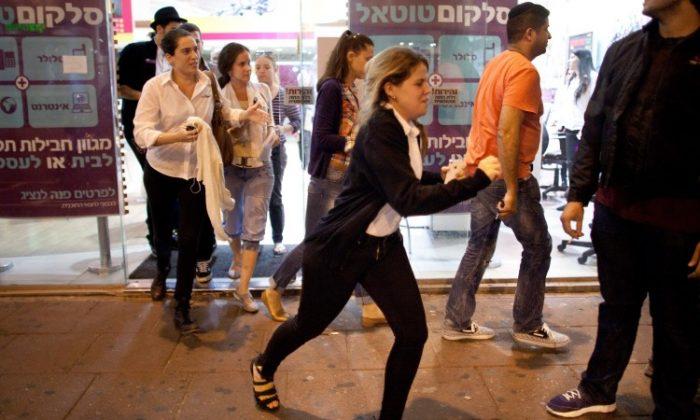In 2002, a water stain was discovered on the eastern side of the Foundation Stone in Israel. This ancient artifact carries great significance for Jews, Christians, and Moslems as it lies under the Dome of the Rock on the Temple Mount.
Writer and director Tali Ohayon has produced a fascinating documentary that explores this phenomenon. According to their scriptures, Jews and Moslems both believe that the rising of water in the foundation stone presages the End of Days.
Filmed by Roni Aharon, with interesting post-editing by Eldad Cohen and spellbinding animation by Daniel Louis, the documentary features interviews with physicists and clergy from three religions.
Among those interviewed was Yehuda Etzion from the Jewish Underground, whose religious-nationalist views prompted him to try to blow up the Dome of the Rock in order to speed up the Redemption. Today he is apparently aware of his mistaken way of thinking, which almost brought tremendous destruction to the world.
In another interview, professor Haviva Pedaya explains the creation of the world and souls—the essence of the world—as well as the meaning of evil and redemption. Great-granddaughter of renowned Kabalist Rabbi Yehuda Pedaya, as well as poet and researcher of Judaism and Jewish culture, Pedaya teaches Jewish history at Ben Gurion University and is a Fellow of the Van Leer Institute.
Pedaya’s discussion regarding the Temple Mount puts light on religious rulings and secular decisions concerning the site. After the Six-Day War, the government decided to return the keys to the Temple Mount to the Moslem Wakf in accordance with the ancient religious ruling that forbids going up to the Temple Mount.
The desire for dialogue and interaction expressed by both Rabbi Batzri and Sheikh Dr. Akrama Al-Sabri reinforces the idea that holiness has the power to take the issue from the earthly level and bridge the gap through dialogue and the power of God and faith despite territorial disagreements and conflicts.
The film suggests that theological conflict is the source of political conflict. Politics often channels and perverts theology for its own purposes.
Ohaion sees the film as a kind of closure. In 2002, her sister told her about the rumors that the water in the Foundation Stone was rising and that it was a sign of the End of Days.
Six years before, Ohaion began studying philosophy in Tel Aviv, and while finishing her master’s degree, she started to observe the Torah. As she dove into a deeper study of the Foundation Stone, she read the Book of Creation and commentaries and articles on the subject that led her to decide to make the film.
“What I was interested in saying was, first of all, on the practical, political level. According to the religious-mystical approach, the holiness of the site makes it impossible for people to change it or rule over it through military or political force,” says Ohaion.
“In the End of Days, this place will be a place of connection between nations, not of conflict, and it will take on meaning as soon as mankind is ready for it. Then the role of the Jewish people will become the nation of priests to the entire world.”
Ohaion explained the historical and spiritual aspects of this special place. “It is believed to be the site of the Holy of Holies in the Temple, but the earthly location is actually a reflection of the spiritual world. It is connected to the creation of the world, like a fetal stem-cell from which the world develops.”
She says that throughout history, water has played an important role. “This is manifested by the bursting forth of water at the time of the Flood and later in the End of Days, and the fact that the Foundation Stone covers the mouth of the abyss and prevents the waters from bursting forth.”
Ohaion says Old Testament stories of Creation and the Great Flood recounts mankind’s destruction, and a prophecy tells of redemption. “The Foundation Stone is the foundation of the world from the time of the Creation. But it was also the source of the destruction of the world at the time of the Flood because … the subterranean waters washed away mankind.
“According to the prophecy, at first the waters that burst forth from it will be very destructive. Then … the waters will bring about the Redemption. For instance, the prophecy says that the water will turn the Dead Sea into the Sea of Life. These will be purifying waters, which will change the geo-morphological and spiritual state of creation.”
This documentary is highly recommended for a deeper understanding of the religious culture of Israel and an artifact that is believed to play an important role in mankind’s future.
Kabala is the religious mystical system of Judaism--also called the teaching of the secrets.
“The Burdensome Stone” will be shown at the Israeli Film Festival this June in Los Angeles and New York.
“The Burdensome Stone” was written, directed, and produced by Tali Ohaion (Talia Inspiration Ltd., Scala Ltd.); co-produced by Ruth Downie, Amir Gedalia, Yaiv Hamama, and Oren Sela; cinematography by Roni Aharon; edited by Eldad Cohen; music composed by Yosef Assayag and Ziv Harpaz; and animation by Daniel Louis; film poster based on a painting by Sergeo Daniel Cherkoff;graphic design by Eldad Cohen.




